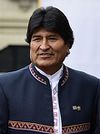Wechua general election, 1678
| |||||||||||||||||||||||||||||||||||||||||||||||||||||||||||||||||||||||
| |||||||||||||||||||||||||||||||||||||||||||||||||||||||||||||||||||||||
| |||||||||||||||||||||||||||||||||||||||||||||||||||||||||||||||||||||||
The Wechua general election of 1678 is the second general election in the Wechua Nation since the return of the Sapa Wechua Manco Cápac and the restoration of order and governance over the Wechua Nation. This is the 4th general election held in the Wechua Nation under the Wechua Constitution of 1663.
The election took place in the fourth month of 1678, to elect all 301 Royal Councillors in the Council of the Wechua Nation. The election was administered by the Wechua National Council for Elections (WNCE).
The election resulted in a Social Democrat win with an expanded majority of 59 seats (their largest majority yet). The Conservative and Royalist Coalition performed poorly, losing seats to both the Social Democrats and the Nationalist & Humanist Union. The Nationalist & Humanist Union gained 12 seats, propelling it to third place nationwide for the first time. The Communist Party of the Wechua Nation saw severe losses as the growth of the Social Democrats ate into its base of support around the city of Apurimaq.
The steep losses experienced by the Conservative and Royalist Coalition resulted in the resignation of its leader, Urma Allcca Asto, who lost her seat to the Social Democrats.
Prior to the calling of the general election, the Social Democratic Club won two by-elections in seats formerly held by Conservatives in a by-election, both seats characterized by their high margins votes for Conservative candidates in 1673. The SDC victory in strong Conservative seats was seen by many as a bad omen for Conservatives in the upcoming general election.
Campaign
On 2.VIII.1677, the Inkap Rantin (Prime Minister) Vicaquirao Alvarez met with the King to request that the Council of the Wechua Nation be dissolved to allow for new elections to fill all 301 seats in the Council. The King accepted and dissolved the Council soon after.
The early date for the election ensured that the formal campaign would be unusually longer than expected, lasting from VIII.1677 until XV.1677. The election was scheduled for 2.XV.1677, to coincide with local elections on the same day. Later changes in the electoral law of the Wechua Nation have resulted in general and local elections moving forward falling on the same day whenever possible.
The unusually long election period was requested by two political parties - the Conservative and Royalist Coalition and the National & Humanist Union. Both parties argued that the long campaign would allow them to effectively make their cases to the people and allow them to fundraise. While Alvarez and the Social Democrats disagreed vehemently with the longer election period, opinion polls and the seemingly unsurmountable organizational advantage of the Social Democrats eventually led Alvarez to change his mind and present his recommendations to the King to allow for a longer campaign period. The gesture was widely seen as conciliatory by opponents of Alvarez and even earned him goodwill among them. Some political analysts argue that this further solidified the lead of the Social Democrats in the election.
It was in this election that the Wechua Beer and Spirits Union rolled out its first series of election-themed chicha. Several of the nation's largest makers of chicha, a corn beer made from a variety of maize landraces, released one brand per party leader, with labels decorated with their respective candidate and party's logos and colors.
Social Democrat campaign
The Social Democrats ran a slick campaign, which emphasized the splits within the Conservatives and highlighting the successes of the Alvarez government, especially the Restoration of the country after its collapse. The campaign did veer slightly into negative advertising, but it paled in comparison to an aggressively confrontational campaign waged by the Conservative & Royalist Party. Vicaquirao Alvarez, highly popular, was very much the centerpiece of the campaign and proved a highly effective campaigner.
The influence of political "spin" came into great effect for the Social Democrats at this point, as media-centric figures of the party provided a clear cut campaign with enviable success.
Conservative campaign
The Conservative and Royalist Party began low in the polls and experienced great difficulties gathering the party under the continued leadership of Urma Allcca Asto. During the party's convention, called after the writ of election was released, a strong challenge to Allcca Asto's leadership came from the party's sizeable moderate caucus, led by Alberto Lopez de la Viña, an MP of Caputian descent. The challenge by de la Viña was aimed at removing Allcca Asto due to the party's constantly poor performances during by-elections and the expected bad performance in the upcoming elections. Polling had begun to reflect that the party was headed towards significant losses to the Social Democrats and a rising National & Humanist Union. The challenge also aimed to move the party to the center on key issues, mostly on the economy, the welfare state, social issues, and national development.
De la Viña was widely seen as a stronger candidate to lead the party due to his relatively moderate stances, record as a former leader of a crucial region, wide name recognition, and access to high-paying donors that rivaled Allaca Asto's network of financial support. Where Allcca Asto, however, excelled was at oratory and retaining the widespread support and strong loyalty from the party's grassroots activists.
In a pre-convention fight over the seating of delegates, Allcca Asto supporters charged the de la Viña campaign with improperly seeking to obtain delegates to represent them at the convention. The Conservative and Royal Party Executive Committee supported de la Viña in the dispute, which was a clear and hurtful break for the Allcca Asto campaign. When delegate credentialing committees met to consider the issue before the convention convened in Parap, they sustained Allcca Asto's position. Stripped of 42 delegates, de la Viña's backers started to realize that their chances of beating Allcca Asto were slim.
The de la Viña campaign sustained their efforts in the convention, which saw their speakers and surrogates completely shut out of the convention process at the urging of Allcca Asto personally. Despite not securing enough delegates to reject a vote for leader, Allcca Asto was confirmed as leader of the party in the first ballot. However, the whole protracted convention fight severely weakened Allcca Asto and deeply fractured the party.
The Conservatives struggled to come up with a definitive theme to attack the Social Democrats, with some strategists arguing for a decidedly negative approach focused on pointing out the failures of the government in its first term and then pivoting to what a Conservative government would do differently. The confrontational approach ended up alienating many voters and instead serve to highlight that the Conservatives were more socially conservative and more in favor of eliminating the generous welfare programs that were credited with lifting millions of Wechua out of poverty over the previous five years. The campaign failed to gain much traction, and the Conservatives went down to a landslide defeat at the polls.
National & Humanist campaign
For the National & Humanist Union, this was the third election campaign fought by leader Rawa Vilca, a former general that became a war hero during the Wechua Spring, who opted to offer a more down-to-earth approach to voters, which proved popular, especially with disaffected Conservative voters and even moderates. There were some questions, however, over Vilca's abilities when, at the N&H manifesto launch, he was asked about taxes and the fiscal situation of the country and appeared confused about the figures. The moment made some voters think that Vilca was out of touch.
Alexandrian & Caputian Party campaign
The Alexandrian and Caputian Party benefitted from an increase of voters of both Caputian and Alexandrian descent that began arriving in the country soon after the Restoration. The campaign was well-funded and competitive, but due to the Alexandrian and Caputian concentration in cities only, the party was not a meaningful political force outside of some key neighborhoods in some of the country's largest urban centers. Its leader, Julia Noir, had a largely positive view of the public, but was greatly hampered by the fact that the party and the leader were largely unknown outside of the Alexandrian and Caputian refugee communities. Despite this big challenge, the party was often able to find a lane for themselves in urban centers, focusing instead on issues that were specialized to the communities they represented, instead of establishing a larger platform aimed at national governance. The party did make some gains, but largely was not a player outside of its scattered urban strongholds.
Communist campaign
The Communist Soviet of the Wechua Nation ran a very haphazard and clumsy campaign. Its leader, Mamaq Pachari Cuya, was also challenged in his leadership of the party and managed to survive the challenge by three votes at the Communist Soviet Convention held in the city of Rimarima. The Social Democrats had targeted all of their seats around the Rimarima. Polling had reflected that the Communist base was shrinking as their voters began to defect to the Social Democrats thanks to their economic plans and meaningful improvement to the quality of life of Wechuans during the previous two to three years. The Communist campaign also dodged many attacks from the other parties, which targeted it as a political arm of a terrorist army that plunged the country into war. The attacks insinuated that the party had been partly responsible for the collapse of the country in the late 1660's.
Opinion Polling
| Polling Firm | Date | SDC | CRC | ACP | N&H | CSWN | Margin of
Error |
Sample Size | Method | Lead |
|---|---|---|---|---|---|---|---|---|---|---|
| WechuIPO | 2.VIII.1677 | 56% | 18% | 8% | 16% | 2% | ±2.8 pp | 2,204 | Telephone/online | +38% |




